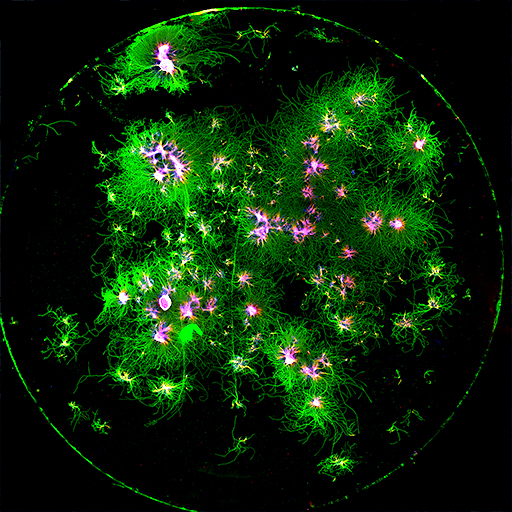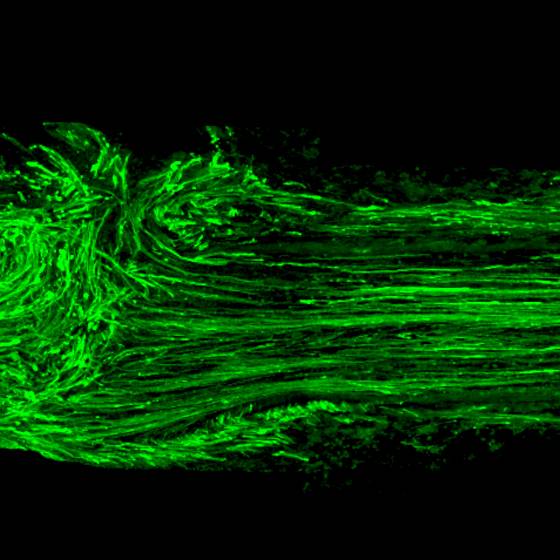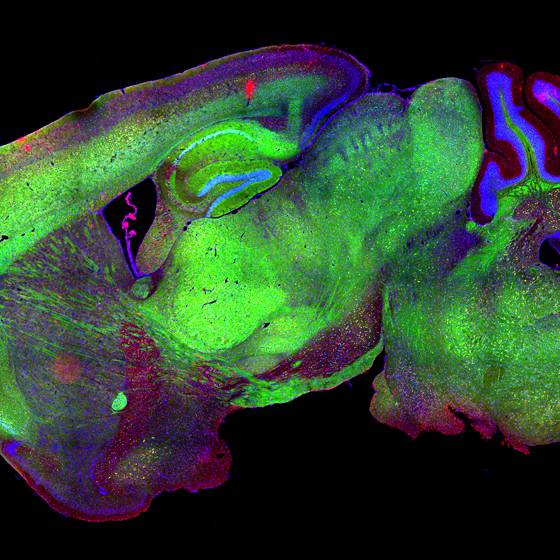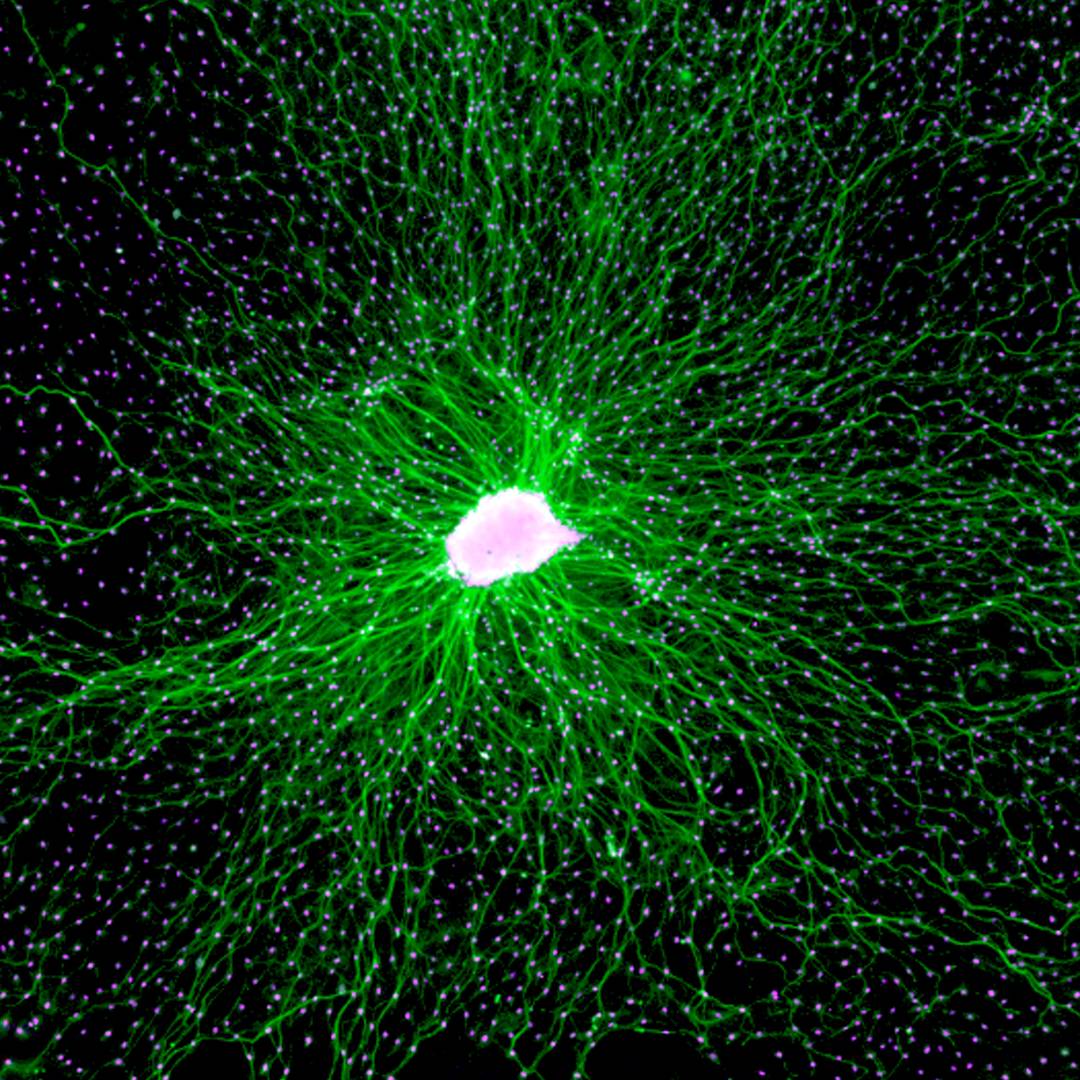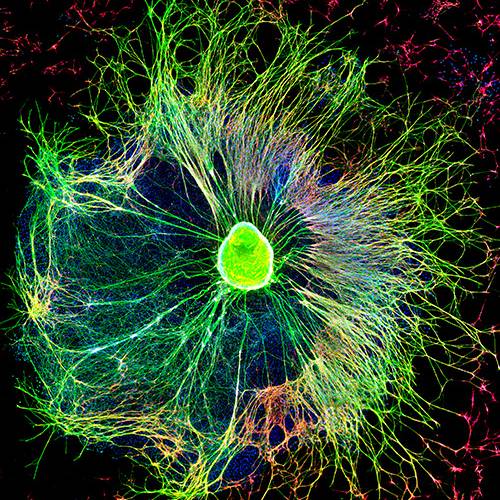Axonal Degeneration as a target for neuroprotection
Destruction programs are cellular mechanisms that have survival value when they operate under physiological control, but their malfunction could be deleterious for the organism. Apoptosis, or programmed cell death, is a well-known physiological destruction mechanism most apparent during development but persisting throughout the organism’s life. Other destruction programs are emerging as physiological processes that may not terminate in the destruction of the whole cell but only of restricted cellular domains. In the case of neurons, pruning of exuberant branches of terminal arborizations and degeneration of axons severed from their cell bodies are outstanding examples. Importantly, axonal degeneration is an early event in neurodegenerative condition including Alzheimer´s and Parkinson disease, as well as peripheral neuropathies. We are interested to define molecular players in the process of axonal degeneration to find therapeutic targets for neuroprotection.
Golgi staining of a mouse hippocampal section, with this technique, sparse neuronal labelling is obtained, which allows detailed analysis of individual neurons.

The degeneration of axons constitutes a salient feature shared by several neurodegenerative diseases that contributes to neuronal dysfunction and cell death. To date, the precise molecular and cellular mechanisms of axonal degeneration are under intense investigation. The morphological evidence indicates that axon degeneration as a consequence of aging and neurodegenerative diseases takes place in a retrograde fashion also known as dying back degeneration, which precedes cell death of the neuronal soma. Axon degeneration shares several characteristics with cell death by activation of the necroptotic signaling pathway, including mitochondrial dysfunction, ROS production, and intracellular calcium increase, and we have found that necroptosis inhibition by genetic or pharmacological means delays axonal degeneration in neurons from the peripheral and central nervous systems, as well as in model of Alzheimer´s and Parkinson Disease.
People involved

Macarena Arrazola
PI collaborator

PhD in Biological Sciences from the Catholic University of Chile. Studying the contribution of necroptosis in the age-associated axonal degeneration of the hippocampus, and the impact of using pharmacological approaches to revert neuronal dysfunction and cognitive impairment during aging, proposing necroptosis as an attractive target for the future development of geroprotective tools to treat age-related disabilities.

Daniela Rebolledo
Senior Research Assitant

BI am a Biochemist from Pontificia Universidad Católica de Chile (PUC) and PhD in Cell and Molecular Biology from the same university. My PhD thesis research was performed at the Physiology and Biophysics department, University of Washington. My research has focused on the physiology of the neuromuscular system and the pathological mechanisms behind neuromuscular disorders of diverse etiology.

Genesis Vega
Postdoctoral fellow

Bachelor’s degree in Biochemistry at the Universidad Austral de Chile. PhD in Sciences with mention in cellular and molecular biology at the Universidad Austral de Chile carried out at CECs and University of Heidelberg. Studying the role of NAD+ imbalance in the activation of necrosome and dysfunction of mitochondrial metabolism in chemotherapy-induced axonal degeneration in aged peripheral neurons.

Rodrigo Leiva
Research Assitant

B.Sc(hons) degree in Neuroscience from the University of Glasgow and M.Sc in Integrative Neuroscience from the University of Edinburgh. I’m currently working on the role of axonal necroptosis and inflammation in the dopaminergic neurons of the nigrostriatal pathway in Parkinson’s Disease to assess it as a potential therapeutic target through the inhibition of RIPK3.
Related Publications
PUBLICATIONSDataNervous System FxPNSNeuroDegeneration
septiembre 30, 2021
Schwann cell to axon transfer of ribosomes: toward a novel understanding of the role of glia in the nervous system.
Court FA, Hendriks WT, MacGillavry HD, Alvarez J, van Minnen J.
J Neurosci. 2008 Oct 22;28(43):11024-9. doi: 10.1523/JNEUROSCI.2429-08.2008.
PMID: 18945910
PUBLICATIONSDataNervous System FxPNS
septiembre 30, 2021
Alpha6beta4 integrin and dystroglycan cooperate to stabilize the myelin sheath.
Nodari A, Previtali SC, Dati G, Occhi S, Court FA, Colombelli C, Zambroni D, Dina G, Del Carro U, Campbell KP, Quattrini A, Wrabetz L, Feltri ML.
J Neurosci. 2008 Jun 25;28(26):6714-9. doi: 10.1523/JNEUROSCI.0326-08.2008.
PMID: 18579745
PUBLICATIONSDataPNSNeuroDegeneration
septiembre 30, 2021
Remodeling of motor nerve terminals in demyelinating axons of periaxin-null mice.
Court FA, Brophy PJ, Ribchester RR.
Glia. 2008 Mar;56(4):471-9. doi: 10.1002/glia.20620.
PMID: 18205176
PUBLICATIONSDataNervous System FxPNS
septiembre 30, 2021
Beta1 integrin activates Rac1 in Schwann cells to generate radial lamellae during axonal sorting and myelination.
Nodari A, Zambroni D, Quattrini A, Court FA, D'Urso A, Recchia A, Tybulewicz VL, Wrabetz L, Feltri ML.
J Cell Biol. 2007 Jun 18;177(6):1063-75. doi: 10.1083/jcb.200610014.
PMID: 17576799
Related News
Doctorado en Neurobiología dio inicio a su versión 2019 con charlas de destacados científicos
octubre 14, 2021
La cita contó con la exposición de la Premio Nacional de Ciencias 2006, Dra. Cecilia Hidalgo, quien reflexionó sobre la incorporación de la mujer al mundo de la ciencia. La bienvenida a la jornada la…
Curso internacional y Mini-simposio “Neuroinflammation in Health and Disease”
octubre 14, 2021
El Curso internacional y Mini-simposio “Neuroinflammation in Health and Disease”, va realizarse del 3 al 9 de abril en el Institut Pasteur de Montevideo, la Facultad de Medicina (Udelar) y el…




